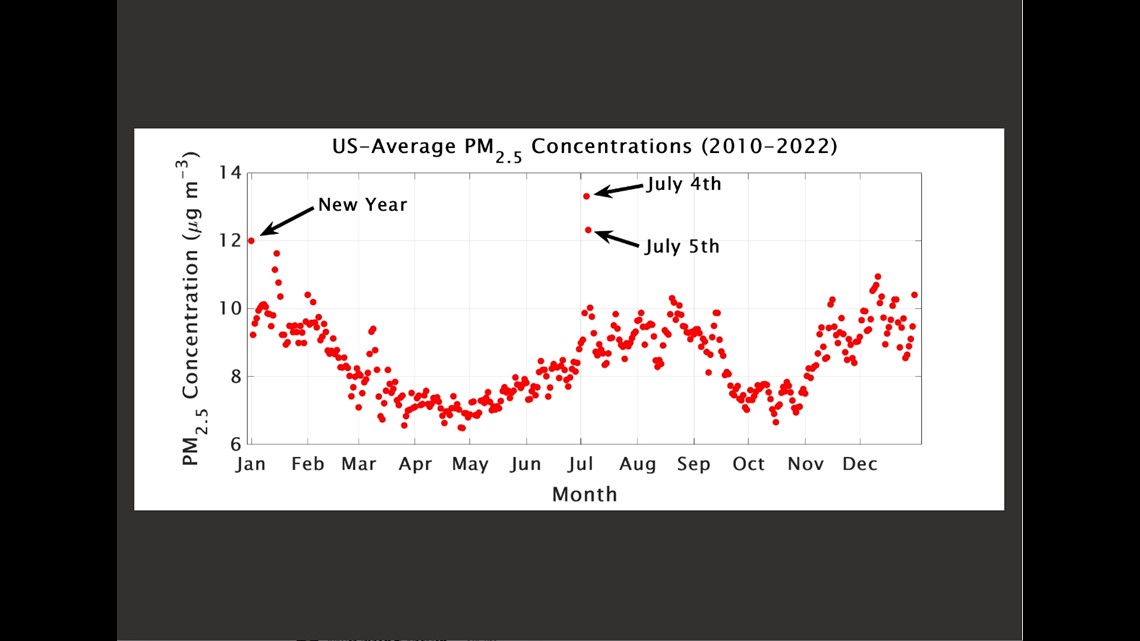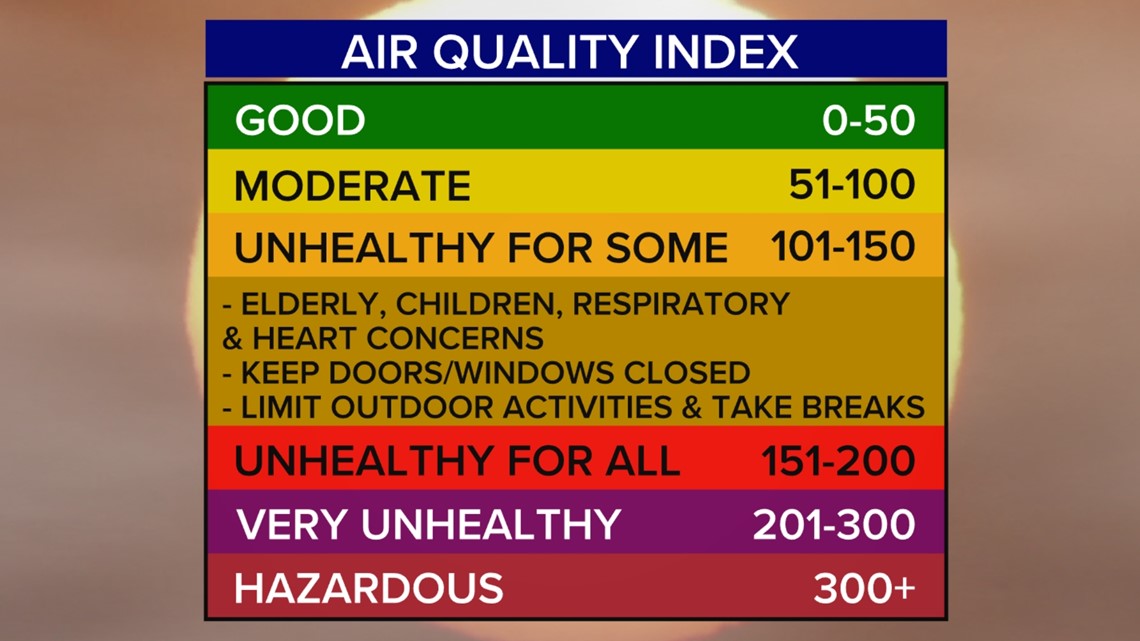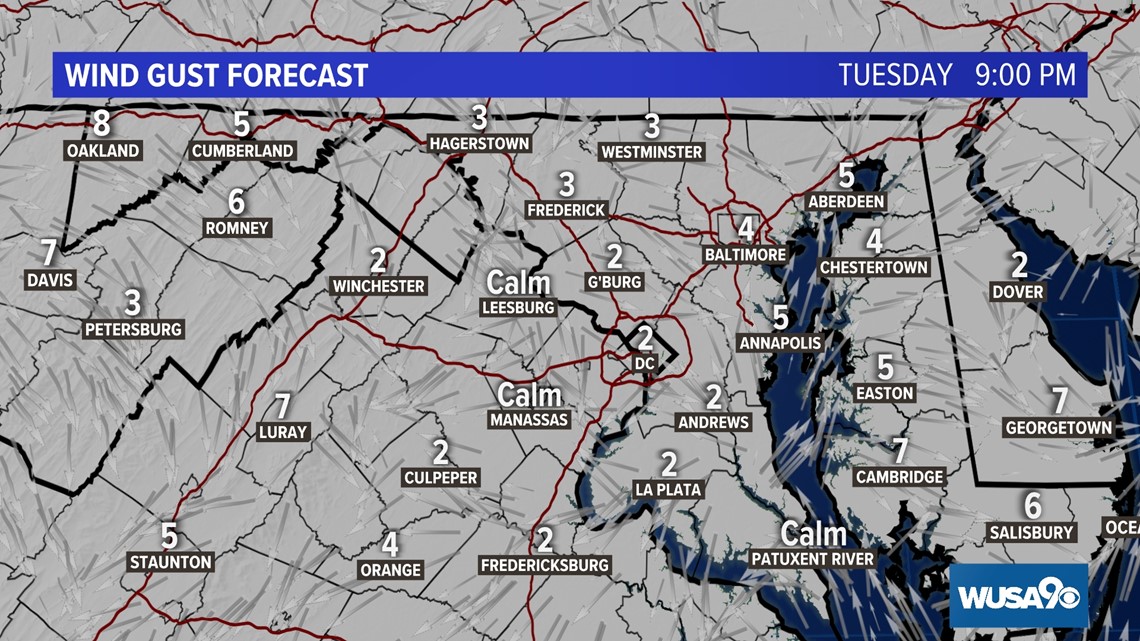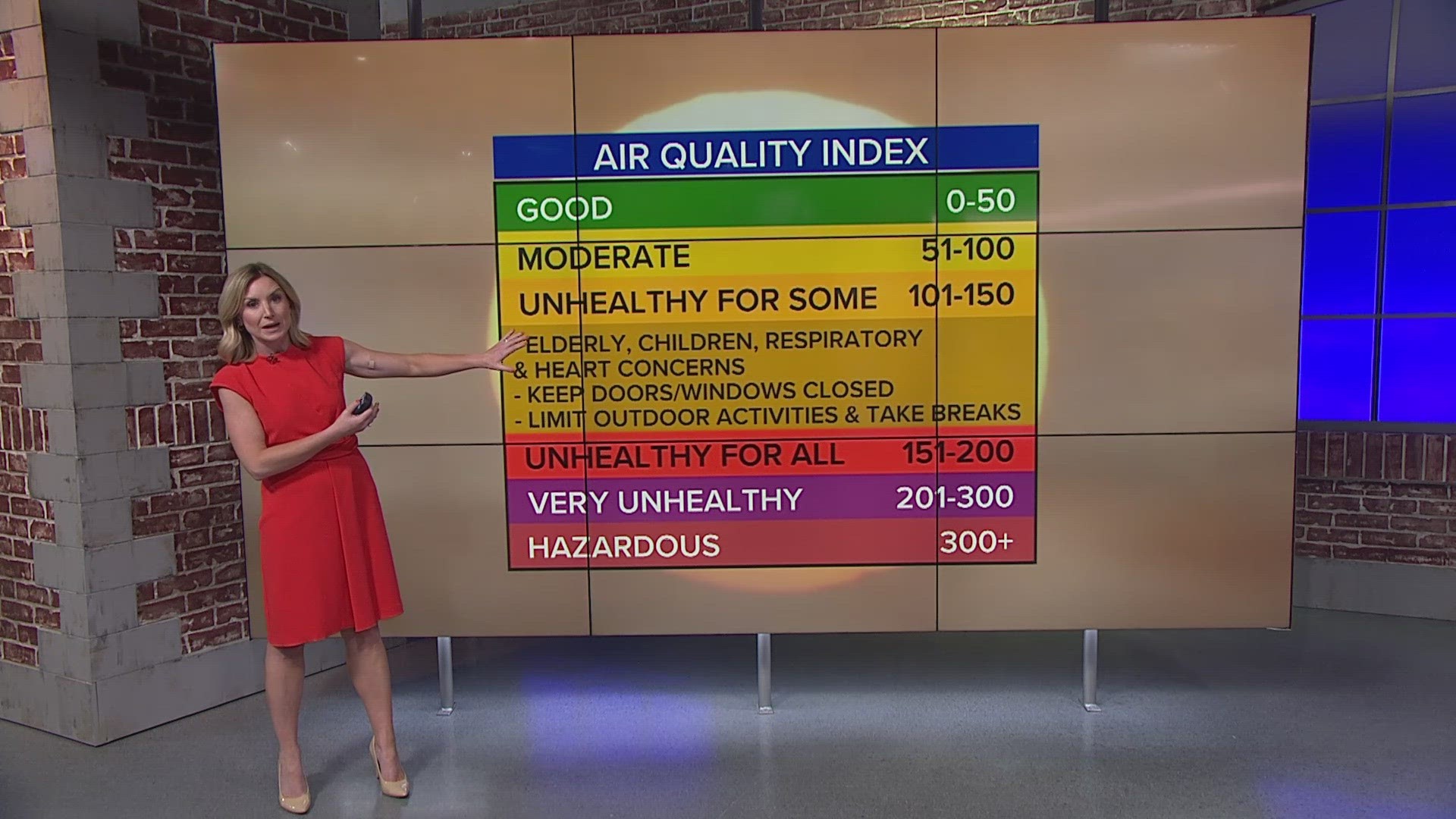WASHINGTON — Fireworks may be an Independence Day staple, but the pyrotechnic pollution can lead to poor air quality.
In fact, PM2.5 (or particulate matter 2.5 - the tiny particles or droplets in the air that are two and a half microns or less in width) measures the highest on July Fourth.
According to the US-Average PM2.5 for each day of the year, there is a 40% to 50% spike on the 4th of July through the 5th. A similar spike can be seen on New Years Day.
The Metropolitan Washington Council of Governments is forecasting Code Orange air quality for sensitive groups for the D.C. region July 4th through July 6.


The Independence Day pollutants will largely be the result of firework smoke, while Wednesday and Thursday air quality be impacted by our everyday ozone pollution heating up and reducing air quality.
Code Orange means the elderly, children and people who suffer from heart and lung diseases should limit time spent outdoors and keep windows and doors closed.


A smoky haze is nothing new to the DMV, but it's important to know the difference in where the pollution is coming from.
If you're attending a firework display as big as the National Mall show or as small as a backyard display and want to avoid high concentrations of PM2.5, steer clear of the point of launch and watch the show from an area upwind of the smoke.
Unfortunately, it will be hard to plan around wind Tuesday night because our breeze is very light and variable. This will also allow smoke to linger longer because we don't have a steady wind to clear it out.


Check out a full list of the best places to watch fireworks from around D.C. here.

